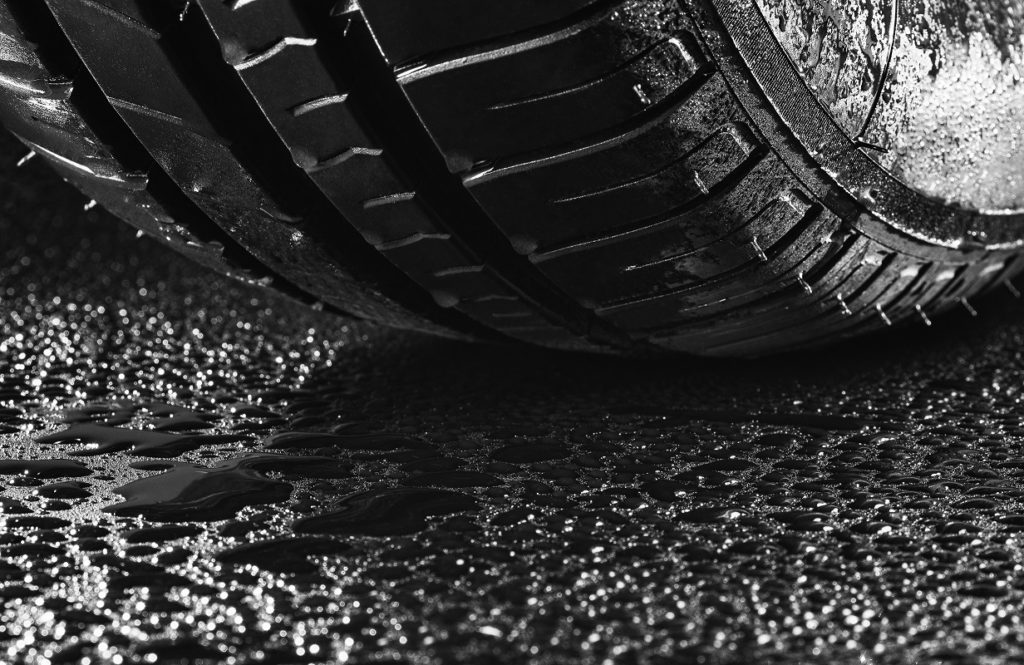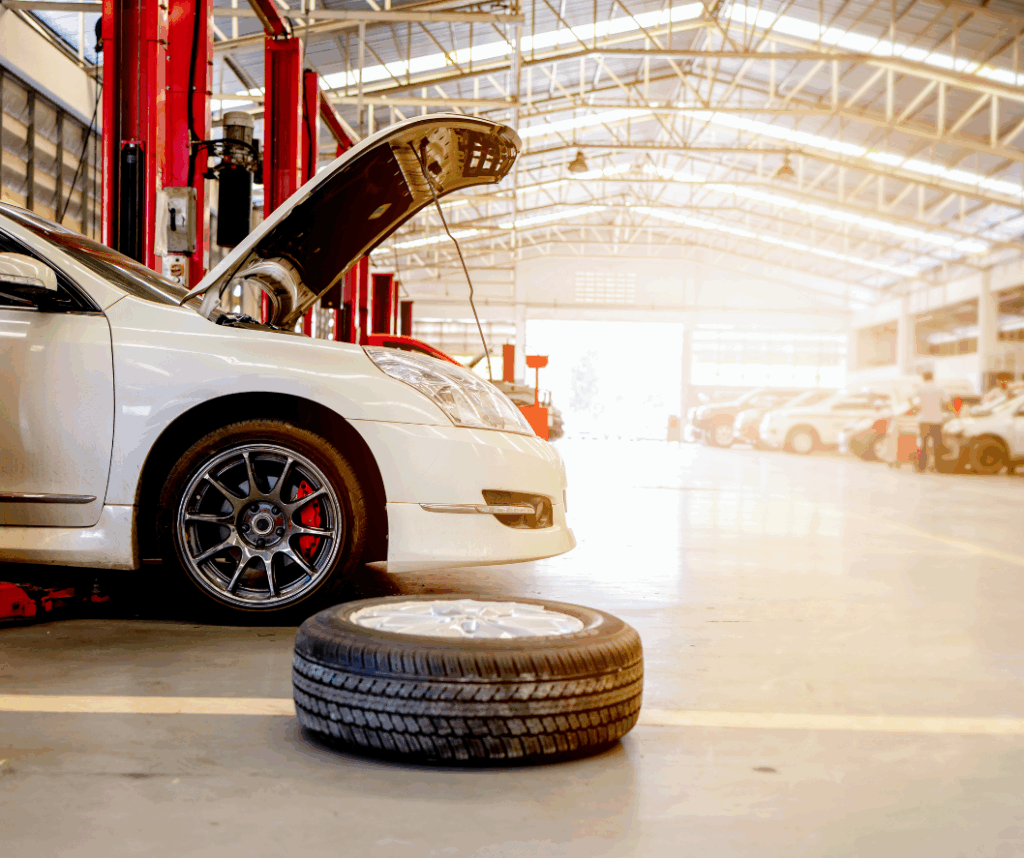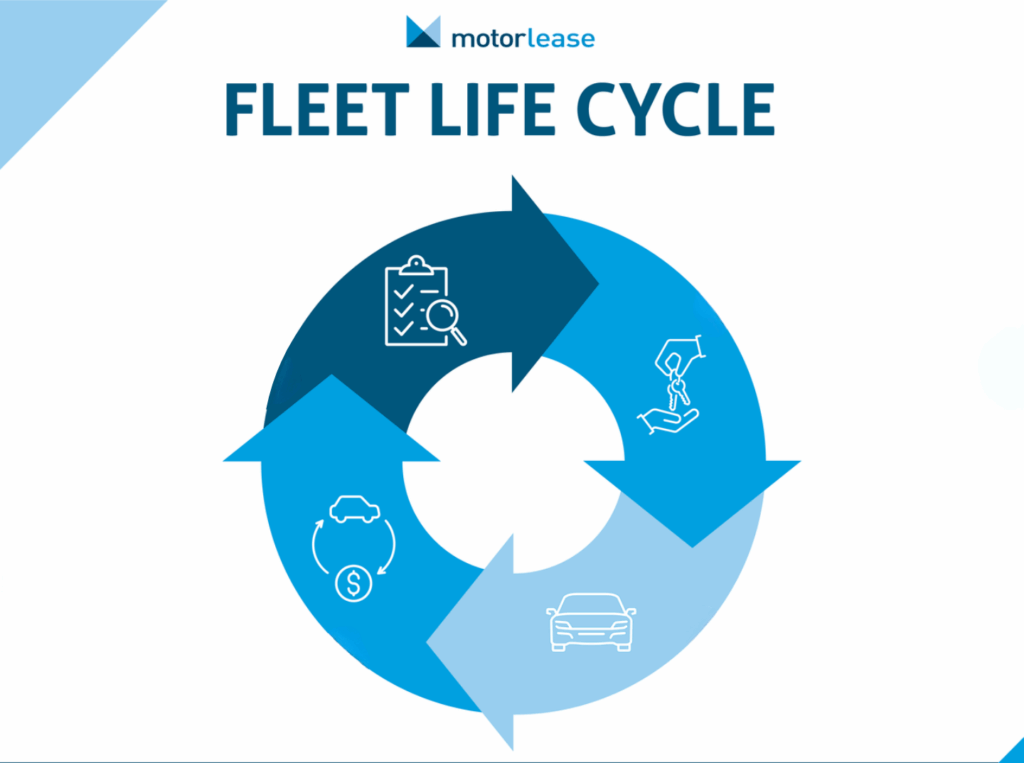They say that April showers bring May flowers, but tulips and daisies aren’t the only things that pop up as a result of spring-time rain. For those of us on the road, rainy conditions can also result in a dangerous situation known as hydroplaning. What exactly is hydroplaning and how do you avoid it? In this article, we’ll answer those questions and provide some expert tips to keep you safe.
In This Article
What is Hydroplaning?
What Causes Hydroplaning?
When Does Hydroplaning Occur?
How Do You Prevent Hydroplaning?
What is Hydroplaning?
Hydroplaning, also sometimes referred to as aquaplaning, refers to the skidding or sliding of a vehicle’s tires across a wet surface. USNews elaborates, “Hydroplaning is when a vehicle starts sliding uncontrollably due to the tires encountering more water than the treads can displace. When driving at high speeds over wet pavement, the water begins to push the front tires off the ground slightly, creating a thin film between the tire and the road. That film, and the resulting separation of the road and tire, causes the driver to lose control of the car and possibly end up in a crash.”
What Causes Hydroplaning?
As the name suggests, the key component in hydroplaning is a wet road surface. However, there are also several other factors that play a role as well. According to Auto Scope Car Care, other factors include:
- Water Depth
- Pavement Ruts/Texture/Cross-Slope & Grade/Width
- Speed
- Tire Inflation/Tread Wear/Tread Aspect Ratio
- Vehicle Weight/Type
When Does Hydroplaning Occur?
This may seem like an obvious question, however you may be surprised to learn that there is a particular timeframe that tends to be especially problematic. According to Safe Motorist, “Hydroplaning can occur on any wet road surface, however, the first 10 minutes of a light rain can be the most dangerous. When light rain mixes with oil residue on the road surface, it creates slippery conditions that can cause vehicles, especially those traveling speeds in excess of 35 mph, to hydroplane. This can be a deadly combination for the driver and surrounding motorists.”
How Do You Prevent Hydroplaning?
The only surefire way to avoid hydroplaning is to avoid driving in wet conditions. Since that’s not practical for most people, here are several tips from DrivingTests.org to help you avoid the situation:
Reduce Your Speed: Most automobile safety experts agree that hydroplaning is most likely to occur at speeds greater than thirty-five miles per hour. It is best to drive five to ten miles slower than the speed limit, even slower in heavy rain or windy conditions. Sudden increases in speed, such as those required to pass, put you at a greater danger of hydroplaning. Avoid sudden accelerations at all costs.
Properly and Regularly Rotate and Balance your Tires: Keeping your tires in tune will also help prevent your car from hydroplaning on wet roads.
No Cruising in the Rain: If you were to begin hydroplaning while driving with the cruise control on, it will take additional time for you to disable the function before beginning to regain control of your vehicle.
Avoid Puddles and Standing Water: Try to avoid any place on the roadway that you can see has collected water.
What If I Start to Hydroplane?
Sometimes despite our best efforts, we still find ourselves in undesirable situations. If you’re driving and begin to feel your vehicle start to hydroplane, Bridgestone Tires suggests that you take the following actions:
Take Your Foot Off of the Accelerator: The moment you feel skidding, take your foot off of the accelerator. If you keep your foot on the gas, the car could start moving in the wrong direction when the wheels regain traction.
Do NOT Slam on the Brakes: Whatever you do, resist the urge to slam on your brakes. Sudden braking when hydroplaning can cause your car to skid completely out of control. If you absolutely must brake during the slide, pump your brakes very gently and lightly until the wheels regain traction with the road.
Steer Into the Skid: Steer in the direction that the car is hydroplaning as this will allow your tires to realign with the direction that the car is traveling, and as a result, help you regain steering control.












